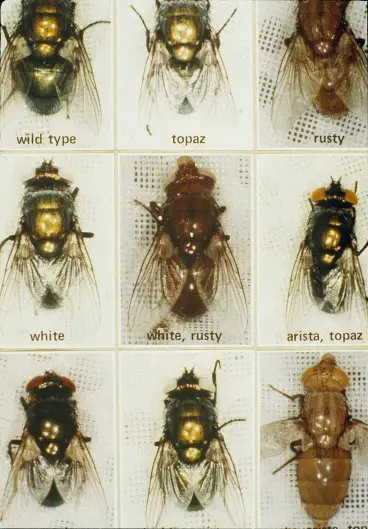Why are there so many flies in Australia? Well, the answer lies in the unique environmental conditions of this vast continent. With its diverse landscapes, ranging from arid deserts to lush coastal regions, Australia provides the ideal breeding grounds for these pesky insects. The warm climate, abundance of organic matter, and lack of natural predators have all contributed to the proliferation of flies in this beautiful country.
But fear not, dear reader, for in this article, we will delve into the fascinating reasons behind this phenomenon and explore some practical solutions to minimize their buzzing presence. So, let’s embark on a journey to unravel the mystery of why Australia is a haven for flies.
Table of Contents
Why are There So Many Flies in Australia?
Australia is known for its diverse wildlife, stunning landscapes, and unique ecosystems. However, one aspect of the Australian experience that many visitors and even locals find challenging is the abundance of flies. These pesky insects seem to be everywhere, buzzing around and landing on anything and everything.
In this article, we will delve into the reasons behind the high population of flies in Australia, exploring various factors including the climate, geography, and even cultural practices. Let’s uncover the mystery and gain a better understanding of why flies thrive in the land Down Under.
The Australian Climate
The climate in Australia plays a significant role in fostering the ideal conditions for flies to flourish. With vast areas of the country experiencing a hot and dry climate, flies are able to thrive in these warm conditions. Flies are cold-blooded insects, meaning they rely on external heat sources to regulate their body temperature. Therefore, the warm climate in Australia allows flies to be more active and reproduce at a rapid rate.
Additionally, the availability of water is crucial for flies to breed and lay their eggs. Despite the arid nature of some regions, Australia still possesses numerous water sources such as rivers, lakes, and even temporary water bodies during rainy seasons. These water sources provide favorable breeding grounds for flies, contributing to their high populations.
The Influence of Geography
Another factor that contributes to the abundance of flies in Australia is its unique geography. The country’s vast size and diverse landscapes create a variety of habitats suitable for flies. From coastal areas to deserts, forests to grasslands, flies have adapted to different environments and are found throughout the country.
Flies are especially prevalent in rural regions, where agricultural activities are common. The presence of livestock and crops provides an abundant food source for flies, attracting them to these areas. Furthermore, fly populations are known to increase near garbage dumps, sewage treatment plants, and other areas with organic waste, as these environments provide an ample supply of nutrients for flies to thrive.
Cultural Practices and Flies
While climate and geography contribute to the high fly population in Australia, cultural practices also play a role. Australians have a love for outdoor activities, including barbecues, picnics, and camping. These recreational activities often involve food consumption and outdoor dining, which becomes an open invitation for flies to join the feast.
Rather than being deterred by a few flies, many Australians have learned to coexist with these insects. They have developed various strategies to cope with the annoyance, such as using fly screens, wearing fly repellent, and employing other creative methods to keep flies at bay. However, these cultural practices may inadvertently contribute to the persistence of flies, as they are not actively discouraged from interacting with humans.
Other Factors Affecting Fly Populations
Beyond climate, geography, and cultural practices, several other factors can influence fly populations in Australia. These include:
1. Abundance of food: Flies are opportunistic feeders and can consume a wide range of organic matter, including decaying plants, animal waste, and even human food. The availability of food sources determines the size and population density of flies.
2. Breeding cycles: Flies reproduce at a rapid rate, with many species having short life cycles. This quick turnover allows for multiple generations to exist simultaneously, resulting in a higher population density.
3. Migration: Flies have the ability to migrate over long distances, allowing them to colonize new areas and expand their populations.
4. Predators and parasites: While flies have few natural predators in Australia, certain bird species, spiders, and parasitic wasps help control their populations to some extent.
5. Environmental changes: Flies can adapt and thrive in response to environmental changes, such as urbanization and the introduction of new food sources.
Managing Fly Populations
Given the persistent presence of flies in Australia, effective management strategies are necessary to minimize their impact. Here are some commonly employed methods:
1. Sanitation measures: Proper waste management and disposal are essential for reducing fly populations. Regular garbage collection and the use of sealed bins can help eliminate potential breeding grounds.
2. Fly screens and netting: Installing fly screens on windows and doors, as well as using netting over outdoor eating areas, can prevent flies from entering homes or interrupting outdoor gatherings.
3. Chemical control: Insecticides, such as fly sprays and baits, can be used to target flies directly. However, caution should be exercised when using chemical control methods, ensuring they are safe for humans, pets, and the environment.
4. Biological controls: Introducing natural predators or parasites of flies can help manage their populations naturally. For example, releasing parasitic wasps that target fly larvae can be an effective biological control measure.
5. Educational campaigns: Raising awareness about fly management and encouraging good hygiene practices can significantly reduce fly populations. Educating the public on the importance of proper waste disposal and personal hygiene can minimize fly attraction and breeding sites.
Flies are an inevitable part of the Australian experience, thanks to the country’s unique climate, geography, and cultural practices. The warm climate and availability of water provide ideal conditions for flies to thrive, while the diverse landscapes create various habitats for them to inhabit.
Cultural practices, such as outdoor dining and the tolerance of flies, also contribute to their abundance. However, through proper management strategies and awareness, it is possible to reduce the impact of flies and enjoy the beauty and wonders Australia has to offer without being constantly annoyed by these buzzing insects.
Flies in Australia!!!
Frequently Asked Questions (FAQs)
Australia is known for its abundance of flies due to various factors:
1. The warm and sunny climate provides a suitable environment for flies to thrive.
2. Australia’s large agricultural industry creates favorable conditions for fly breeding.
3. Flies are attracted to livestock, which are abundant in Australia.
4. The presence of flies is also influenced by the availability of food sources, such as decaying matter and vegetation.
Several species of flies are commonly found in Australia, including:
1. House flies (Musca domestica)
2. Blowflies (Calliphoridae family)
3. Fruit flies (Drosophila family)
4. Stable flies (Stomoxys calcitrans)
5. Sand flies (Phlebotominae family)
6. Mosquitoes (Culicidae family)
Flies undergo a life cycle consisting of four stages:
1. Egg: Flies lay eggs in suitable environments, such as decaying organic matter or animal waste.
2. Larva (maggot): The eggs hatch into larvae, which feed on organic material in their surroundings.
3. Pupa: The mature larva transforms into a pupa, encased in a protective covering.
4. Adult: After the pupal stage, flies emerge as fully formed adults, ready to reproduce.11
Flies can be a nuisance to humans due to the following reasons:
They can transmit diseases by picking up pathogens from various sources and then landing on food or surfaces.
Flies create annoyance by buzzing around and landing on people’s faces and bodies.
Their constant presence can disrupt outdoor activities and affect the overall enjoyment of outdoor spaces.
While flies can be a nuisance, most species do not pose a direct threat to humans. However, they can indirectly contribute to the spread of diseases.
You can take the following steps to minimize flies:
Ensure proper waste management by covering trash cans and disposing of garbage regularly.
Keep doors and windows closed or screened to prevent flies from entering your home.
Use fly screens on windows and doors to create a barrier.
Maintain cleanliness and hygiene in your living spaces, especially in the kitchen and dining areas.
Some natural remedies may help repel flies to some extent, such as:
Using essential oils like lavender, eucalyptus, or peppermint as natural fly deterrents.
Planting fly-repelling herbs like basil, mint, or rosemary in your garden.
Using fly traps or flypaper to catch and control the fly population.
Flies are found throughout Australia, but regions with harsher climates or more urbanized areas may have relatively fewer flies compared to rural and coastal regions.
Final Thoughts
Australia is known for its abundant population of flies, which can be quite a nuisance for both locals and visitors. The warm and dry climate of the country provides the perfect breeding grounds for flies, allowing them to reproduce rapidly. Additionally, the vast expanse of open spaces, including farms and rural areas, offers ample food sources for flies.
The presence of livestock, waste, and decaying matter further attracts these pests. Increased human activity and urbanization also contribute to the fly population. Understanding the factors that contribute to the prevalence of flies in Australia helps shed light on the issue and emphasizes the importance of implementing effective pest control measures.
Auto Amazon Links: No products found. http_request_failed: A valid URL was not provided. URL: https://ws-na.amazon-adsystem.com/widgets/q?SearchIndex=All&multipageStart=0&multipageCount=20&Operation=GetResults&Keywords=B0B7BP6CJN|B0B7BFMHNF|B0B7BRL3ZH|B0BN57YZZT|B0B7B2LZWZ|B0BN59K9HN|3303867011|B07QK9C9KT|B00I5H5Z1O|B0747N5KDM|B0CJB2KBJX|B0B7S213SX|B09WDQ3G2W|B0B9YRY9MW|B0B9ZSRND1|B0B9YWJ3XY|B0BZ5SVC4G|B0B9YWYHB2|B0B9YV1C75|B0822G8NCF&InstanceId=0&TemplateId=MobileSearchResults&ServiceVersion=20070822&MarketPlace=US Cache: AAL_01f00c417ec6efd9fb0093af19a7dfbc http_request_failed: A valid URL was not provided. URL: https://ws-na.amazon-adsystem.com/widgets/q?SearchIndex=All&multipageStart=0&multipageCount=20&Operation=GetResults&Keywords=B01LXFSJY7|B071DPCBQG|B0BYBHRZ7T|B07GKVBQDG|B09SQCMT5G|7073960011|B07CZDXDG8|B09Q9DPF8X|B07SL2RKJK|B07SL2X217|B07SQTWW8S|B08KCQQNN5|B0C3C4VG5M|B07SM6HJTY|B09HR38V1T|B0BMF7PJ4X|B07CN6ZDVY|B08YZ2K3PV|B0C6X2VP9R|B0BQJ7X1VY&InstanceId=0&TemplateId=MobileSearchResults&ServiceVersion=20070822&MarketPlace=US Cache: AAL_3b40dcac4190cc03cc6ace3f1429ce9d http_request_failed: A valid URL was not provided. URL: https://ws-na.amazon-adsystem.com/widgets/q?SearchIndex=All&multipageStart=0&multipageCount=20&Operation=GetResults&Keywords=B0BQJ5WPCD|B0BQJ8PGFX|B0CN2RFTBX|B0CD7QKN53|B0BY912FK6|B0BX8NQBJS|B0BX8LLPMZ|B0BX8LLB6Y|B0BX8MZZP7|B0BX8MD2T2|B0C28DG49P|B07MYW7C3Z|B0BQ7PD5YW|B09DYN6SYR|B0CGX538DK|B0BN4Z47CK|B09Q3LV1TQ|B09Q3MPPZ8|B09Q3LTQ41|B09Q3MW9JR&InstanceId=0&TemplateId=MobileSearchResults&ServiceVersion=20070822&MarketPlace=US Cache: AAL_de875af60866dfa0ae3474bcbd0972e8 http_request_failed: A valid URL was not provided. URL: https://ws-na.amazon-adsystem.com/widgets/q?SearchIndex=All&multipageStart=0&multipageCount=20&Operation=GetResults&Keywords=B09Q3PC9JB|B0BJF9LMHW|B08FMNXX68|B0BZ418TWS|2477391011|B07QFTGGYF|B0969MLLDJ|B07X8587YC|B07QBXXGQY|B07FZK8XKR|B07FZL7V7Y|B07QCWVBPG|B099DHXQ1L|B07RRDFHCM|B07M7KQ5WF|B07MSG5JDN|B0924H4XB9|B07SRRQS5B|B0BWJV1CMX|B0BG1CK6GF&InstanceId=0&TemplateId=MobileSearchResults&ServiceVersion=20070822&MarketPlace=US Cache: AAL_b2248c20bbb6bac13c2ee4d66de51a36 http_request_failed: A valid URL was not provided. URL: https://ws-na.amazon-adsystem.com/widgets/q?SearchIndex=All&multipageStart=0&multipageCount=20&Operation=GetResults&Keywords=B09JC5CZFY|B09B6RBRFH|B09HSBH9KW|B0BMW2985V|B06XN5B7NB|B0CB41FP55|B084GS82RV|B08KD2BH4R|B08KD2R358|B08SPZZ5WS|B09XPWGFTV|6396124011|B0B27HX6P7|B0BFQZLXK5|B0BFR2C7Y1|B0C9HW2DTZ|B0C9HPPL7P|B0C9J66T73|B0C9HPX15Y|B000GCS004&InstanceId=0&TemplateId=MobileSearchResults&ServiceVersion=20070822&MarketPlace=US Cache: AAL_3e17111bd1130e3af7bddbaeb71702fc http_request_failed: A valid URL was not provided. URL: https://ws-na.amazon-adsystem.com/widgets/q?SearchIndex=All&multipageStart=0&multipageCount=20&Operation=GetResults&Keywords=B07SK6ZFLM|B084KP3NG6|B07984JN3L&InstanceId=0&TemplateId=MobileSearchResults&ServiceVersion=20070822&MarketPlace=US Cache: AAL_275d6d17bd961bf2b6d952050db3fff5
Auto Amazon Links: No products found. http_request_failed: A valid URL was not provided. URL: https://ws-na.amazon-adsystem.com/widgets/q?SearchIndex=All&multipageStart=0&multipageCount=20&Operation=GetResults&Keywords=B0C58Q4FM1|B0CYT3XTBG|B0CQQ7QBY8|B0C58PY68D|B0CHYF7S4P|B0CHYC86H1|B0B7BP6CJN|B0B7BFMHNF|B0B7BRL3ZH|B0BN57YZZT|B0B7B2LZWZ|B0BN59K9HN|B09W2G325H|B09W2HKP9T|B09PG83RHQ|B0B58WWVQS|B0C4X6TGCX|B0CB1FD5HW|B0BPX721MW|B0C3HVSZ65&InstanceId=0&TemplateId=MobileSearchResults&ServiceVersion=20070822&MarketPlace=US Cache: AAL_e6b37edee77fbc6f2d251f7d0ff410ae http_request_failed: A valid URL was not provided. URL: https://ws-na.amazon-adsystem.com/widgets/q?SearchIndex=All&multipageStart=0&multipageCount=20&Operation=GetResults&Keywords=B0C3HY95VF|B0BVVZB7RZ|B0C3J51BG2|B0CKSG29RS|B0C3HYB495|B0BWMR2XMX|B0B7RVR41N|B0B7RXN8BR|B0BWMT8WQL|B0C3MF2Z6N|B0C4F85VN8|B0C4F5PXY6|B09CLQLB8X|B0BF2TMWPQ|B0C545ZGWZ|B09CLMN7BV|B09JVCJVJM|B097CB14RP|B0B3YC5G81|B0B3YW1JB5&InstanceId=0&TemplateId=MobileSearchResults&ServiceVersion=20070822&MarketPlace=US Cache: AAL_0fb90923483e0f77d267c390123b2a1c http_request_failed: A valid URL was not provided. URL: https://ws-na.amazon-adsystem.com/widgets/q?SearchIndex=All&multipageStart=0&multipageCount=20&Operation=GetResults&Keywords=B0C8P9DBG6|B0B3YBYMV1|B0BN6CHQF2|B0CGMDQXVB|B07P1SFHK3|B07SL2X217|B07SL2RKJK|B07SQTWW8S|B08KCQQNN5|B0C3C4VG5M|B07SM6HJTY|B07HPLNW94|B07MGZDPLX|B07HPNV3W6|B0CTJNJB27|B0CTJNBP1F|B0CTJQKCJM|B0CTJP6JVK|B0CTJPLNYX|B0CTJQVTNH&InstanceId=0&TemplateId=MobileSearchResults&ServiceVersion=20070822&MarketPlace=US Cache: AAL_85f16d67d327a75293a83b321ab6b369 http_request_failed: A valid URL was not provided. URL: https://ws-na.amazon-adsystem.com/widgets/q?SearchIndex=All&multipageStart=0&multipageCount=20&Operation=GetResults&Keywords=B0CT8D5WBQ|B0D2XZRQL5|B0CT81SJGR|B0CT7BDF9F|B002B4K5Z8|B002B4K6W0|B003I6VRFA|B005UZGOYG|B00K4F4LQK|B002B4ROJS|B0CKSFDXT5|B0C3J617S2|B08DFJV8J2|B0BWHFVJQQ|B0BWH9Y6LK|B0CKSDDQ1R|B076CTX8X6|B09XWV5HSW|B09MRBH3CH|B0BBHC7D9H&InstanceId=0&TemplateId=MobileSearchResults&ServiceVersion=20070822&MarketPlace=US Cache: AAL_bd42bee1c77d10ecd5bcfa6ca11cef1e http_request_failed: A valid URL was not provided. URL: https://ws-na.amazon-adsystem.com/widgets/q?SearchIndex=All&multipageStart=0&multipageCount=20&Operation=GetResults&Keywords=B074Q23H17|B076M2YJ6D|B0CGR1XGVX|B0CGQZ2N81|B0CGR1LMSL|B0CGR2JMDQ|B0CGR2BY2H|B0CQ49GTQY|B09MQWWP87|B0986X2YBX|B09DG17D8V|B09KGC71W8|B0BFHWVKV1|B0CDL1YNV9|B09KGLLG8P|B0CVXQF287|B0CVXNT51V|B0CVXMY884|B0CVXPV53X|B0CVXCX185&InstanceId=0&TemplateId=MobileSearchResults&ServiceVersion=20070822&MarketPlace=US Cache: AAL_3f6b4e4e12164edbd6cc8648252d1e85 http_request_failed: A valid URL was not provided. URL: https://ws-na.amazon-adsystem.com/widgets/q?SearchIndex=All&multipageStart=0&multipageCount=20&Operation=GetResults&Keywords=B0CVXPQTSB|B0C4B5WCK7|B0C4B6R6GC|B0C4B121DR|B0CQYLYFRP|B0C4B3965W|B0C4B5JYNJ|B07DF5M52C|B0BLVM4PCZ|B07F1RY1ZS|B086X28JRH|B07DF84X9C|B086X3DQC2|B09C7WQ123|B09C66ZQQY|B09C7KKTJD|B09C7TMWK9|B09C7K2Y9N|B09C7C9W8P|B0CDB2RF4X&InstanceId=0&TemplateId=MobileSearchResults&ServiceVersion=20070822&MarketPlace=US Cache: AAL_7cd58bc8cde444fa52b4752cf6bb6d89 http_request_failed: A valid URL was not provided. URL: https://ws-na.amazon-adsystem.com/widgets/q?SearchIndex=All&multipageStart=0&multipageCount=20&Operation=GetResults&Keywords=B0CD9TCV74|B0D2RJ64LJ|B0CRDJMWF9|B0CXXVSK93|B0CXXRX468|B0BQJ7X1VY|B0BQJ5WPCD|B0BQJ8PGFX|B0CN2RFTBX|B0CD7QKN53|B0BY912FK6|B0C89JCPXV|B0CPPHT53T|B09QC2JPYB|B0C16GT47T|B0CRB82NZJ|B0BJCZDHR2|B0B5XMK65T|B09J53XPDH|B0CL9TN9DK&InstanceId=0&TemplateId=MobileSearchResults&ServiceVersion=20070822&MarketPlace=US Cache: AAL_118e9fbfbc0556c1960daebcbcb0a06a http_request_failed: A valid URL was not provided. URL: https://ws-na.amazon-adsystem.com/widgets/q?SearchIndex=All&multipageStart=0&multipageCount=20&Operation=GetResults&Keywords=B0CL9S7DC6|B0CL9SXX5P|B0CL9TRMFQ|B0CP5YL32N|B07YS438FV|B0CZ69Q4JM|B0C1MXLYTK|B0BNZW1VP8|B0BNZZF9QF|B0C54YGWG1|B0B6PPKPP4|B0B6PS4RQ1|B0B6PSLTPF|B0B6PQ4LMX|B0B6PRY56N|B0BCL2DLPC|B0BR6SS9TX|B0C4TTG6CL|B0BR71VD83|B0C4TYV7FC&InstanceId=0&TemplateId=MobileSearchResults&ServiceVersion=20070822&MarketPlace=US Cache: AAL_0b819bc041deae2b52af4c55cb3382a6 http_request_failed: A valid URL was not provided. URL: https://ws-na.amazon-adsystem.com/widgets/q?SearchIndex=All&multipageStart=0&multipageCount=20&Operation=GetResults&Keywords=B0CRGSZJD4|B0C4TQN8RJ|1272251011|B08YZ633BY|B0BM9TFX5X|B0BRZYF8DD|B09H2DCTHP|B09H25PVYV|B0BRZW37LK|B0BM9R9SR9|B0C85V7BNH|B0CKMBSQC5|B0CZNY5DVP|B0CZNYCDV4|B0CZNXL1Q4|B0C96NJ62Y|B09MT3HH5L|B0CQ26HX3V|B09MT4J9XL|B0BL3J4Y2P&InstanceId=0&TemplateId=MobileSearchResults&ServiceVersion=20070822&MarketPlace=US Cache: AAL_4da1340a204e939ea10a36fff3193f4d http_request_failed: A valid URL was not provided. URL: https://ws-na.amazon-adsystem.com/widgets/q?SearchIndex=All&multipageStart=0&multipageCount=20&Operation=GetResults&Keywords=B0B7MXKG2Q|B0C7GQM47L|B0BGWZN7MV|B0BW477XFL|B0CBRF436J|B0BGXCG3K2|B0CFFNVM9H|B0BGWQGVBK|B01GGNW2WI|B01GGNW5AM|B0BKG1QXLN|B0BKFBPZ54|B0CMWTZ1GK|B0CMWLYQTB|B0CMWW1M71|B0CMWSGP4Z|B0BPX6DNRG|B0BHYXHH4V|B0BTRMLWQ1|B0BHYSB7F1&InstanceId=0&TemplateId=MobileSearchResults&ServiceVersion=20070822&MarketPlace=US Cache: AAL_18930718008be6f8d4c375c8ff2df8fb http_request_failed: A valid URL was not provided. URL: https://ws-na.amazon-adsystem.com/widgets/q?SearchIndex=All&multipageStart=0&multipageCount=20&Operation=GetResults&Keywords=B0CNXCLSWR|B0CNXCFNV9|B0BHYW2HJX|B09C69N1QF|B09C6668H9|B0C3M7QWZD|B0BC8JP4VP|B0C3M59T2D|B0BC8FZHJK|B07NV3VZ76|B096HR92TC|B0BXX6QG3L|B0BXX3T1MX|B0C6JX5M8D|B0BXX4C81Z|B0BXX44CJM|B0BS3CZWR3|B0BS3BGYHK|B0CDH228KW|B0CGV8TG6S&InstanceId=0&TemplateId=MobileSearchResults&ServiceVersion=20070822&MarketPlace=US Cache: AAL_c7e6389bd3fdde85ec938002810d3e72 http_request_failed: A valid URL was not provided. URL: https://ws-na.amazon-adsystem.com/widgets/q?SearchIndex=All&multipageStart=0&multipageCount=20&Operation=GetResults&Keywords=B0CDH1VFSN|B0CGV9LTNM|B0BQJ8ZWMC|B0C174HHV4|B0BQJ5FPRX|B0BQJ829VV|B0BQJ87PNQ|B0C17558VG|B0978R44R3|B0C3D5HLD3|B0C3D4MXGV|B0978PP68W|B0C3D4F8R5|B0978QWSFS|B0CH7Z64JZ|B0CDMFPG8G|B0CDMJ65ZW|B0BR5KJLN3|B0CDMTBC57|B0CDMCP8XL&InstanceId=0&TemplateId=MobileSearchResults&ServiceVersion=20070822&MarketPlace=US Cache: AAL_61aaf7dd0b5ba608eac290e136d40e27 http_request_failed: A valid URL was not provided. URL: https://ws-na.amazon-adsystem.com/widgets/q?SearchIndex=All&multipageStart=0&multipageCount=20&Operation=GetResults&Keywords=B084KP3NG6|B07984JN3L&InstanceId=0&TemplateId=MobileSearchResults&ServiceVersion=20070822&MarketPlace=US Cache: AAL_ca33fe41b127aed19618c705adf5c66e







